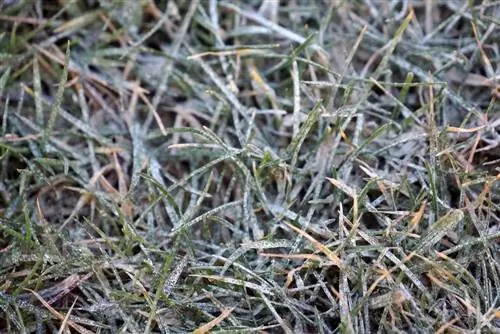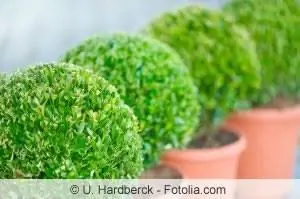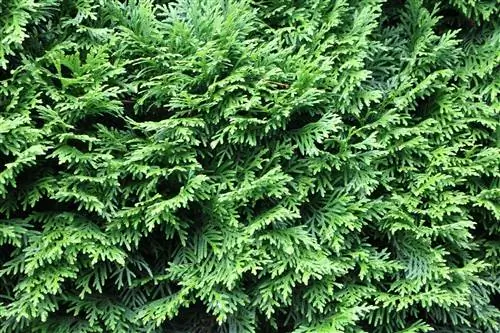- Author admin [email protected].
- Public 2023-12-17 03:39.
- Last modified 2025-06-01 06:48.
The terms blood meal and bone meal may not sound too nice, but the substances themselves have a lot to offer and can provide minerals and proteins in a simple and, above all, long-term way. They were popular as fertilizers for a long time for precisely these reasons. Anyone who values organic fertilization can still enjoy the benefits of these fertilizers today and even produce them themselves.
Bone meal
The name itself suggests what bone meal is about. The substance used, among other things, as fertilizer consists of ground bones. Beforehand, the bones are cleaned of meat residues, tendons and other residues and washed. They are then finely ground in special machines called bone mills.
As flour, the bones are used, for example, as fertilizer but also as feed. In both cases, it should be known whether the animals from which the bones came were in good he alth - because even cooking or otherwise sterilizing them using high temperatures does not eliminate all pathogens.
This also means that the ground bones came into disrepute. As a hypothetical carrier of BSE pathogens, farmers did not want to take the risk either by feeding or fertilizing with the special flour. Eventually, the biological fertilizer was banned by law as a feed additive and source of nutrients for crops. The bans have relaxed. Unfortunately, flour made from animal bones has retained its bad reputation. It has some advantages to offer, especially when it comes to fertilization. These include:
- Long-term effect due to slow decomposition
- natural compounds
- easy to use
- high calcium and phosphorus content
Bone meal fertilizer
Calcium and nitrogen as well as a comparatively high amount of phosphorus are contained in the ground bones. Plants need phosphorus on the one hand for strong and he althy growth of the roots, on the other hand for the formation of chlorophyll and thus for all green parts of the plant but also for the flowers and fruits.
Calcium has, among other things, the stabilizing function in the animal skeleton. The same is true with plants. The mineral is built into the cell walls and is involved in stiffening, and it also contributes to functionality. Calcium plays a similarly important role in the soil itself. It can improve the quality of the substrate by stabilizing the structure. This prevents siltation and - probably less interesting in the garden or pot - erosion. In addition, calcium promotes biological activity in the soil, has a beneficial effect on the conversion of organic material in the substrate and has an influence on the pH value. In the form of lime, calcium is therefore also used to neutralize or alkalize the substrate.
Nitrogen is probably also known to most newcomers to gardening and fertilization and is considered one of the most important plant nutrients of all. Plants need it for growth, it is a component of all enzymes and is therefore necessary in many ways for the he alth of the plants. If there is a lack of nitrogen in the soil, this becomes apparent very quickly, especially on the lawn. Here, unwanted plants, such as clover and dandelions, spread out among the grass.

Bone meal provides plants with important nutrients that promote he althy growth and can further improve the soil.
Bone meal as long-term fertilizer
The ground bones are an organic substance in which the minerals are bound. They are therefore not immediately available to the plants. First of all, they have to be prepared accordingly by the soil inhabitants. The processes required for this begin shortly after the natural fertilizer is applied, but continue for years. This makes bone meal ideal as a long-term fertilizer.
Use of bone meal
Since the components first have to be broken down by the living creatures in the soil, the plant does not benefit from fertilization directly at the root. Instead, the flour should be mixed into the substrate so that it can decompose slowly and provide the plant with long-term care.
There are still various options available for using the fertilizer:
- placed on the soil and worked in loosely
- mixed with the substrate when planting a plant
- sprinkle when digging and roll the substrate
Due to the long-term effect, bone meal should only be used every two to three years.
Make bone meal
Due to the prevailing danger of BSE and the resulting scandal, bone meal fell into disrepute. There are now strict guidelines, but the flours are hardly used in agriculture anymore, but they are still interesting for hobby gardeners. They are also used as a food additive when feeding cats and dogs.
If you want to be on the safe side, you can even make bone meal yourself. This is particularly useful if you are slaughtering yourself and the bones would otherwise not be used. A so-called bone mill is required for production. Models for home use are affordable, but they usually only hold very small bones, which is why they have to be chopped up in advance.

They should also be clean, dry and free of meat residue. These would otherwise lead to decomposition, which, among other things, would affect the shelf life of the fertilizer.
Storage should meet the following requirements:
- dry
- airtight
- cool
Otherwise the bone meal could mold or rot and decompose during storage.
Blood Meal
Blood meal is usually made from chicken blood. During production it is first dried and then pressed or ground. As a fertilizer, the powder is often redissolved and administered in liquid form. However, it can also be used dry and is often mixed with bone meal.
Blood meals are particularly rich in nitrogen and contain proteins, minerals and trace elements. The nitrogen mentioned above is beneficial for plant growth and is important plant nutrition. The trace elements and minerals contribute to a high-quality and stable soil structure. The iron is particularly worth a special mention here.
If plants suffer from iron deficiency, they show it clearly. Instead of green leaves, these are yellow to light yellow. The leaf veins remain green for a long time and are therefore often clearly visible. Then at the latest it will be time for an additional supply of iron, which is very easy with blood meals. The trace element makes the leaf color greener and fresher again. For this reason, iron fertilizers are often used to really make your lawn greener. However, unlike blood meal, iron fertilizers are toxic. Here the natural fertilizer represents a clear advantage.
Tip:
Due to the high iron content, blood meal can have a coloring effect on planters, paving stones and the like. The stains are difficult or impossible to remove. Therefore, great caution should be exercised when using the fertilizer.
Blood meal as fertilizer
As mentioned, blood meal can be used as fertilizer in both liquid and dry form. They are added directly to the soil as liquid fertilizer. As a powder, however, as with bone meal, it is recommended to incorporate it into the substrate and mix it in. Just like in bone meal, the nutrients in blood meal are in an organic, bound form.
In contrast to these, they can be decomposed more quickly and easily by the microorganisms in the soil and are therefore available to the plants in a shorter time. However, this also means they are used up more quickly. It is therefore advisable to combine blood and bone meal with each other. Thanks to the components of the dried and ground blood, the nutrients quickly reach the plant via the roots. If the supply decreases, the microorganisms have had time to decompose the bone meal.

In combination, blood meal and bone meal are a quick and long-lasting effective fertilizer. They are also used to improve soil quality. The blood enriches the reserves of trace elements and nitrogen and, due to its protein content, is a real “food” for useful soil inhabitants. This means that microorganisms and other living beings are increasingly attracted and thereby increase the quality of the soil. The ground bones, on the other hand, stabilize the soil structure and thus also contribute to the quality of the substrate.
Tip:
In order to increase the availability of the blood meal or its components, it can be sprinkled dry and the soil then moistened. It can also be dissolved in water and watered to the plants.
Make Blood Meal
Blood meal is dry and therefore more durable. As finished liquid fertilizers, they usually contain preservatives so that they actually remain liquid and do not spoil.
If you want to use blood for fertilization, you can also use it in other ways. The simplest option is to dilute fresh blood from your own slaughterhouse or a trustworthy source with water and use this for watering. Drying is completely eliminated here. The blood can instead be frozen and thawed if necessary.
Alternatively, the blood can be dried and preserved in this way. To do this, proceed as follows:
- The blood is placed in shallow vessels with as large a surface area as possible to promote evaporation. The thinner the blood layer, the faster it dries.
- At 50°C, the animal blood is dried in the oven or left to stand for one to two days until it dries. However, caution is advised here, as mold can form on the nutrient-rich liquid when exposed to air and drying without an oven.
- Once the blood has dried completely and no longer appears gelatinous or appears to have a moist shine, it is broken out of the containers. The mixture should appear stiff and brittle, not leathery, before it is processed further.
- The fragments can now be processed into powder in a blender, coffee grinder or mortar. The resulting blood meal should be stored dry, airtight and cool.
Tip:
Addition of rice grains can maintain the flowability and thus simplify later use as fertilizer. You should also pay close attention to ensuring that the blood meal is really dry before it is stored.
Conclusion
Bone meal and blood meal can be made yourself under certain conditions, but in any case they are wonderful and easy-to-use fertilizers for ornamental and useful plants. While fresh blood and blood meal ensure a quick and short-term supply, bone meal is a simple and inexpensive long-term fertilizer. The combined use in the garden is optimal and requires little effort.






